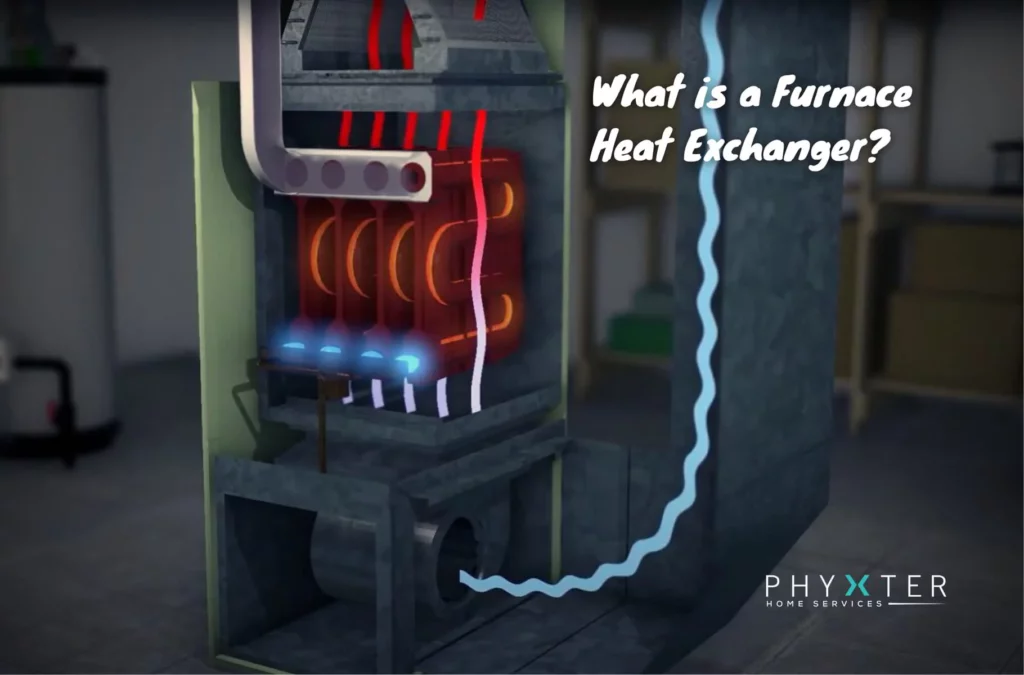Modern air conditioners and furnaces can be complex pieces of machinery.
As a result, it is not uncommon for HVAC contractors to throw around technical terms and parts. Either because they are too used to doing it at work or, in unfortunate circumstances, because they are trying to take advantage of a customer.
As your educator, Phyxter will spend today’s post answering the question, “what is a furnace heat exchanger, how does it work, and what are the common problems associated with heat exchangers?“
There are many parts to a modern furnace, but the furnace’s heat exchanger is one of the most important. In this post, we will dig a little deeper and help ensure that you are ready to talk to your furnace repairman using the same technical terms and understanding that he does.
We will do this by explaining what a furnace heat exchanger is, how it works, what type of fuels can be used and finally, some common problems and how to fix them.
Table of Contents
⭐ What is a Furnace Heat Exchanger?
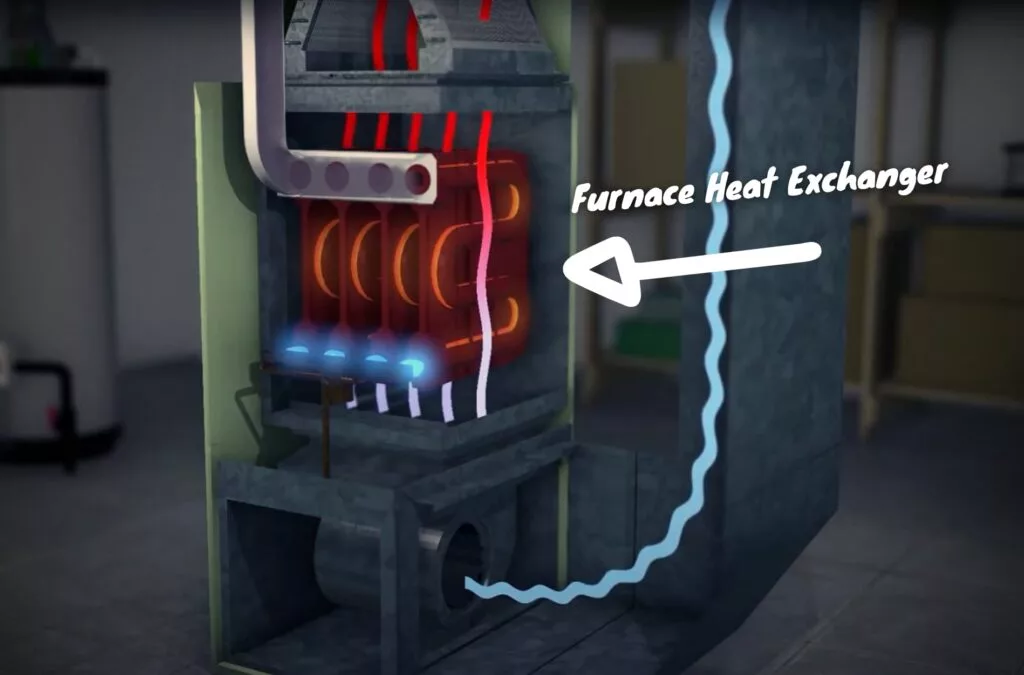
A furnace’s heat exchanger is a set of tubes or coils looped repeatedly through the airflow inside your furnace for heating air. The furnace heat exchanger is the part of your furnace that heats the air.
What shape these coils take depends on what type of furnace you have and what fuel your furnace uses for combustion.
⭐ How does a Furnace’s Heat Exchanger Work?
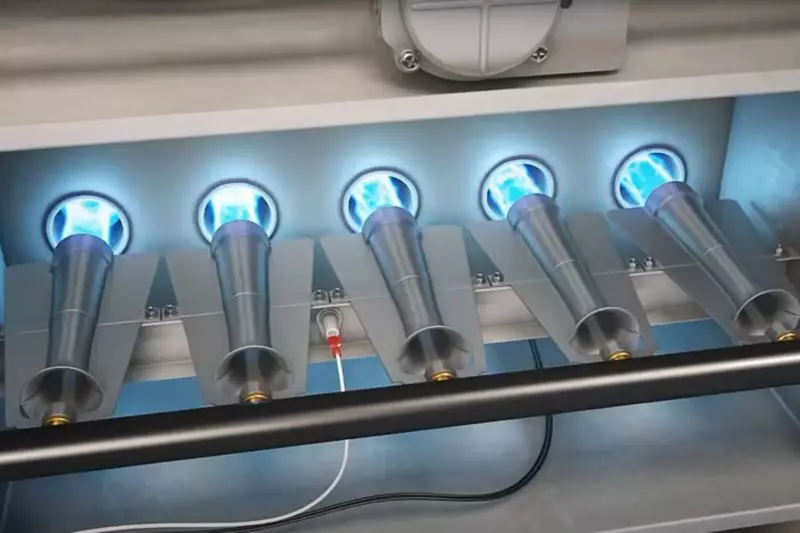
Your furnace’s heat exchanger works using a very simple principle that believe it or not, you are already familiar with. Imagine it’s cold outside, and you just ordered a hot cup of soup at your favorite restaurant.
Ouch! It’s a bit too hot, so what do you do? You blow on the soup, right? This is exactly how your furnace heat exchanger works.
In this example, the heat exchanger is your soup, and the hot air you are blowing off the soup is the hot air that circulates through your house. A furnace’s heat exchanger uses some type of fuel to combust inside of it, creating heat and getting very hot.
Your blower motor (aka your ‘fan’) then blows air over this heat exchanger (like blowing over hot soup) and into your ductwork, where it is distributed throughout your house. That’s it – it really is that simple.
⭐ What Types of Fuel Can Be Used By A Furnace’s Heat Exchanger?
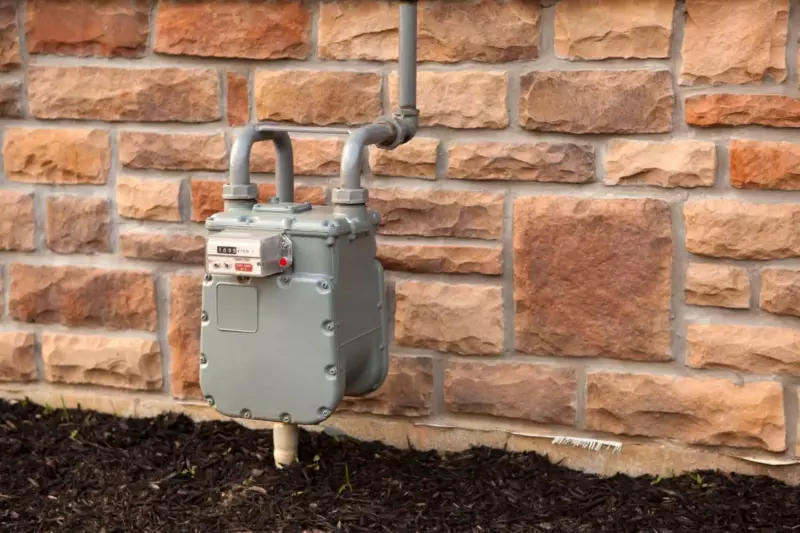
A furnace’s heat exchanger can use all sorts of fuel, and the type of fuel your furnace uses depends on preference, local climate and what kind of fuel is readily available in your area.
For instance, propane might be readily available in New York City. But it is unlikely that you’d find propane as a means of furnace fuel in an off-gridder’s house in Alaska. This is because they don’t have roads to their house and can’t have it delivered!
Your furnace heat exchanger can use many fuel types, including Propane (LP) Gas, Fuel Oil, Natural Gas and Electric.
Some fuels are more efficient than others. Which one you choose depends on some of the above factors. As you can see, an electric furnace is the most expensive means of heating your house.
But electricity is also 100% efficient, meaning that all of it is translated into usable heat by your home. Make the decision by examining what type of fuel is available in your area! Prices can vary depending on supply and availability.
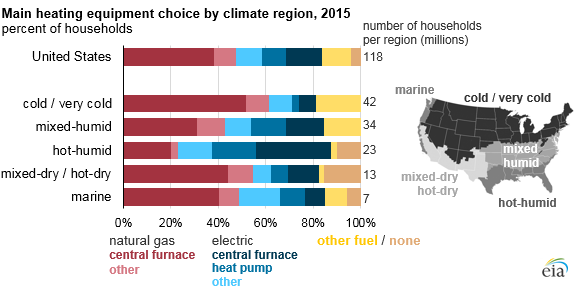
⭐ Is a Cracked Heat Exchanger Dangerous?
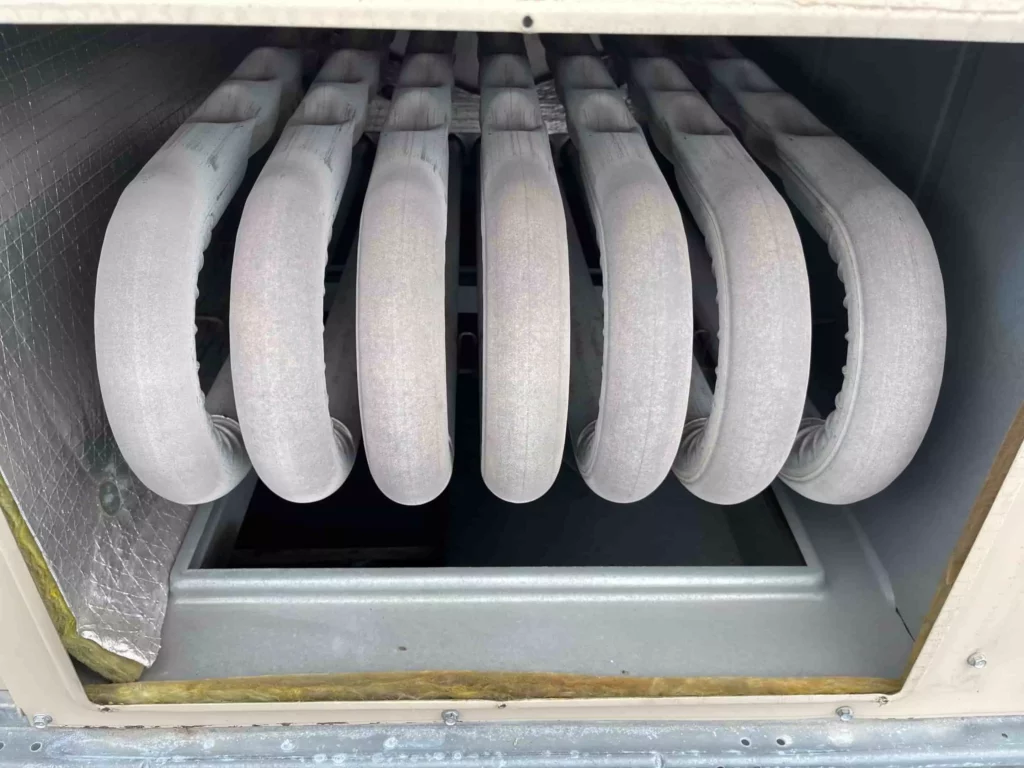
Yes, a damaged or cracked heat exchanger is a significant danger to you and your family.
Remember that your furnace is burning some type of material to generate heat, but this combustion process should take place inside your furnace’s heat exchanger itself.
If your heat exchanger is cracked or damaged, all sorts of dangerous gasses can be leaked into your home, including carbon monoxide – aka “the silent killer“
⭐ How Can I Keep My Family Safe from Carbon Monoxide?
There are several ways to keep your family safe from a cracked furnace heat exchanger.
Ensure your house or business has the proper amount of carbon monoxide detectors. Fire detectors aren’t enough. These carbon monoxide alarms will detect carbon monoxide in the air before it can incapacitate you.
If you have a furnace, ensure that it is inspected annually or at least every other year. If you don’t want to spend the money for your local HVAC contractor to come out, this inspection is easy to do yourself.
No one can inspect your furnace as thoroughly as an experienced contractor with endoscopic cameras, an infrared video inspection system, and other tools.
But to learn how to inspect your own heat exchanger, take a look at the following do-it-yourself video; it is short and informative:
⭐ How Do I Know If My Heat Exchanger Is Bad?
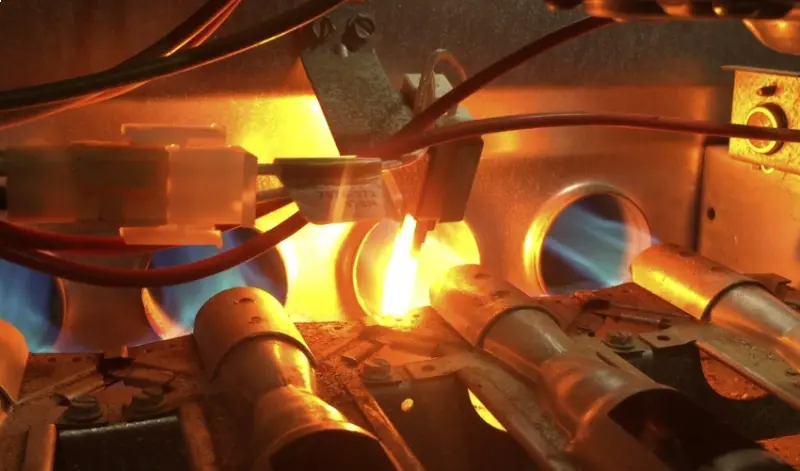
Most gas furnace heat exchangers should last 10 – 20 years, with the average being 15. Though at some point, it will eventually fail. This is normal due to the nature of how furnaces work.
The constant heating and cooling of the heat exchanger lead to metal fatigue over time.
When this happens, it breaks the seal between the combustion gases or “flue gases” ( a mixture of gas and combustion fumes) and the airflow destined to heat your home.
This can create a dangerous situation that needs the attention of a heating professional. However, there are a few warning signs that homeowners can keep an eye on in case of heat exchanger failure:
🛑 Flame Color:
Other than electric furnaces, the flame is what heats your heat exchanger and the airflow. If the flame is blue, then you are all good. If it’s yellow, you have a problem.
A yellow flame means oxygen is getting into the combustion chamber, which is likely from a gas leak.
🛑 Strange Smells:
Carbon monoxide might be odorless, but other smells are not. If your heat exchanger is throwing out weird smells, it could be a sign the exchanger is bad. If you get a formaldehyde-type smell, call an experienced technician.
🛑 Soot Build up or Discolored Metal:
When a heat exchanger develops a crack, you will notice soot buildup around that area. This soot comes from a carbon buildup when the furnace burners don’t burn all the fuel completely.
🛑 Weird Sounds:
If your heat exchanger is cracked, you will likely hear rattling noises as the combustion chamber heats up. The metal that makes up your exchanger will expand and contract differently around a crack and cause popping, rattling and banging sounds.
🛑 Presence of Carbon Monoxide (CO):
CO is an odorless, tasteless, colorless gas that is highly toxic. A failing heat exchanger could leak CO into your home. That’s why it’s essential to ensure your home’s carbon monoxide detector is working correctly and checked annually.
If your CO detector goes off while operating your furnace, immediately switch off your furnace, open as many windows as possible, and get out of your home quickly.
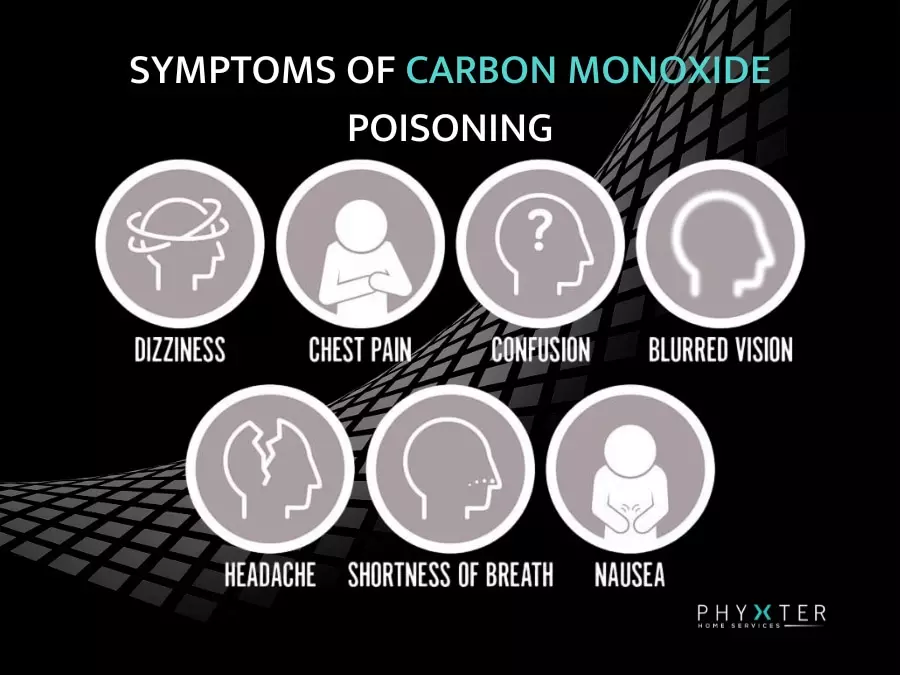
Once outside, call for professional help. If anyone in your household shows any carbon monoxide poisoning symptoms, contact 911 immediately.
🛑 Corrosion or Cracks:
If you find excessive corrosion in any part of your furnace, it’s time to call the professionals. The same goes for heat exchanger cracks…
🛑 Poor Heating:
If you have a faulty heat exchanger, the efficiency of your furnace will drop. Your furnace will have to work harder to achieve the same temperature in your home.
This poor performance may be noticeable but will definitely be reflected in your utility bill.
⭐ What to Do if I Suspect a Cracked Heat Exchanger?
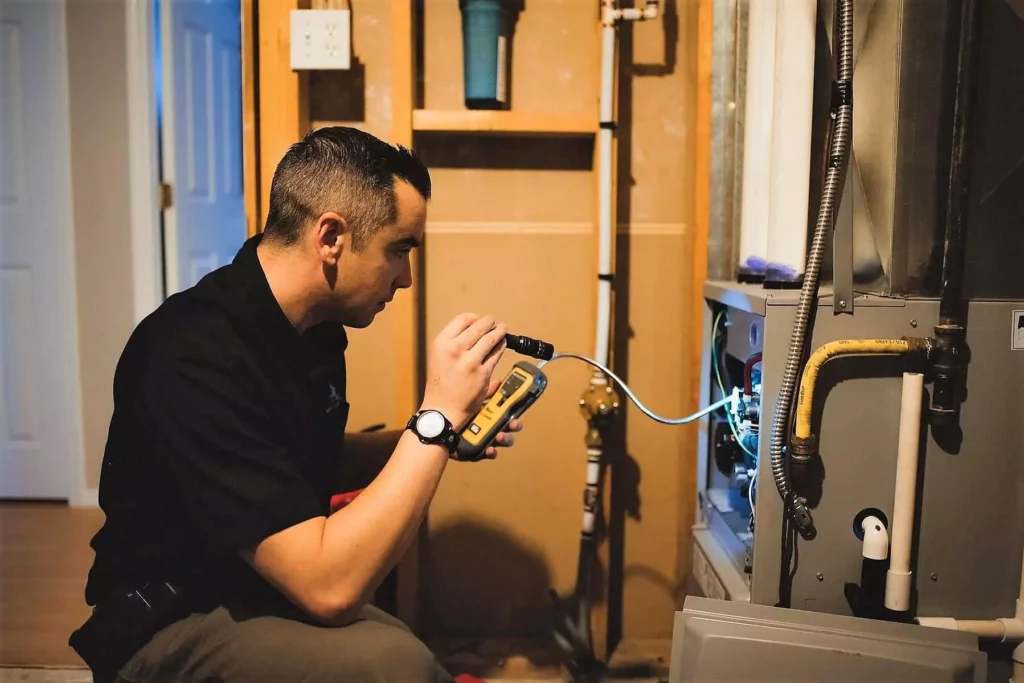
Call your local HVAC professional if you experience any of the above warning signs or suspect that you have a cracked heat exchanger.
Dealing with damaged furnace components is not something a DIY amateur should tackle. A damaged furnace can risk your and your family’s health.
If the inspection determines your heat exchanger is damaged, it is time for a heat exchanger replacement. Unfortunately, cracked heat exchangers are generally not repairable.
If not covered by warranty, a new replacement exchange will cost approx. $1000 – $2000 USD, with $1500 being the average.
Heat exchanger warranties generally only cover the replacement heat exchanger. You will still have to pay for the labor, typically around $500.
It would be best if you also considered the age of your furnace. For example, replacing the damaged heat exchanger may not be worth replacing if your furnace is approaching the end of its serviceable life.
⭐ Final Thoughts on a Furnace’s Heat Exchanger
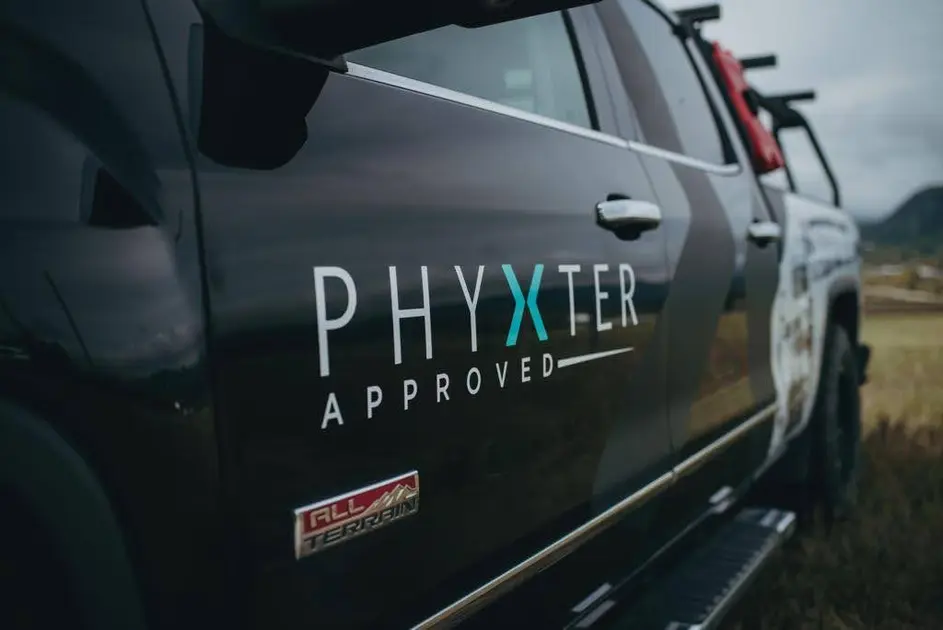
Your furnace’s heat exchanger is one of the most critical parts of your furnace. It is responsible for heating the air inside of your home and can be dangerous if not cared for properly.
But don’t get worried. Modern heat exchangers have an abundance of safety features.
So if you make sure that you do your part by having your furnace’s heat exchanger inspected regularly and ensuring that you have carbon monoxide detectors in your home, you’ll be safe and sound.
As always, we advocate that you get regular checkups of your heating system at least once a year.
For more information on troubleshooting problems with your furnace, check out:
- Homeowners Guide to DIY Furnace Repair: 16 Most Common Problems & Solutions
- Furnace Short Cycling: 9 Causes and Solutions
- Why Is My Furnace Blowing Cold Air?
- My Furnace Won’t Turn Off, What Now?
Please contact us if you have more questions and live in the North or Central Okanagan Valley region.
We’d be happy to help you.

